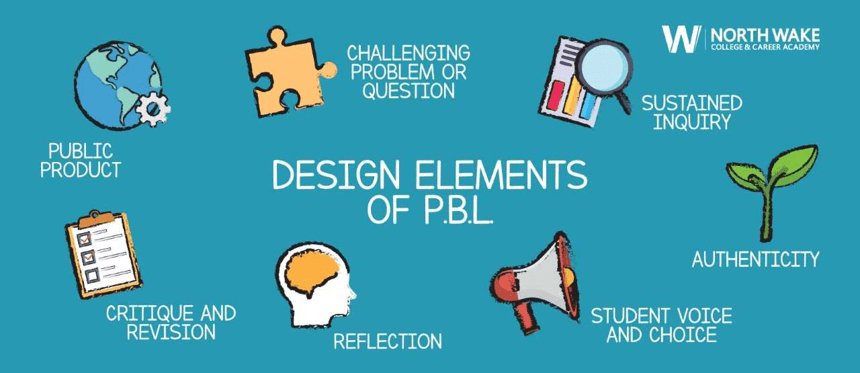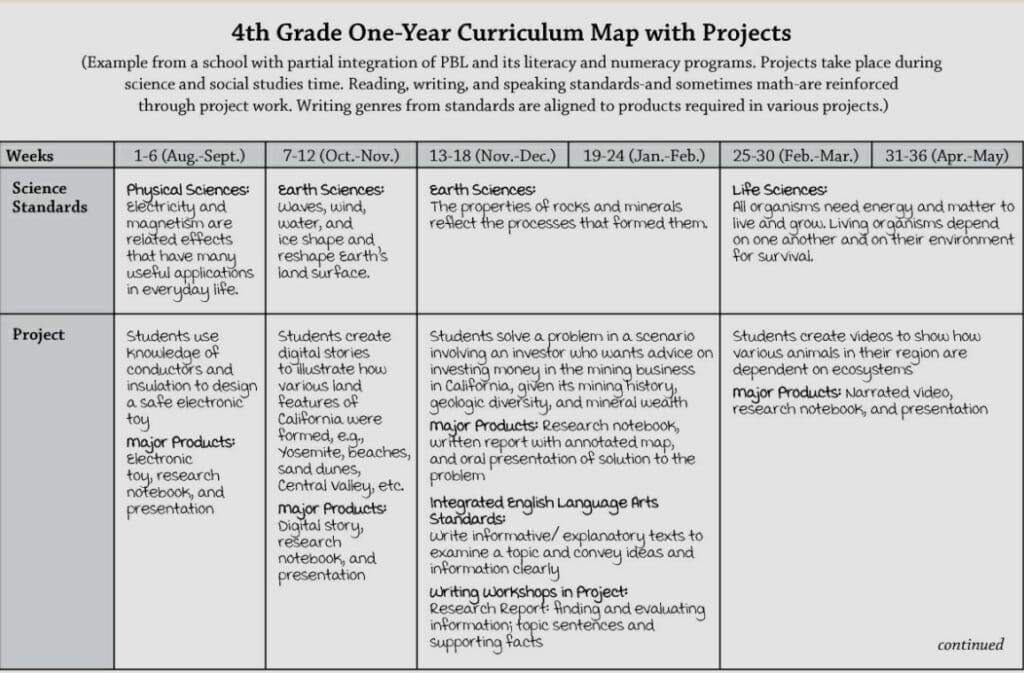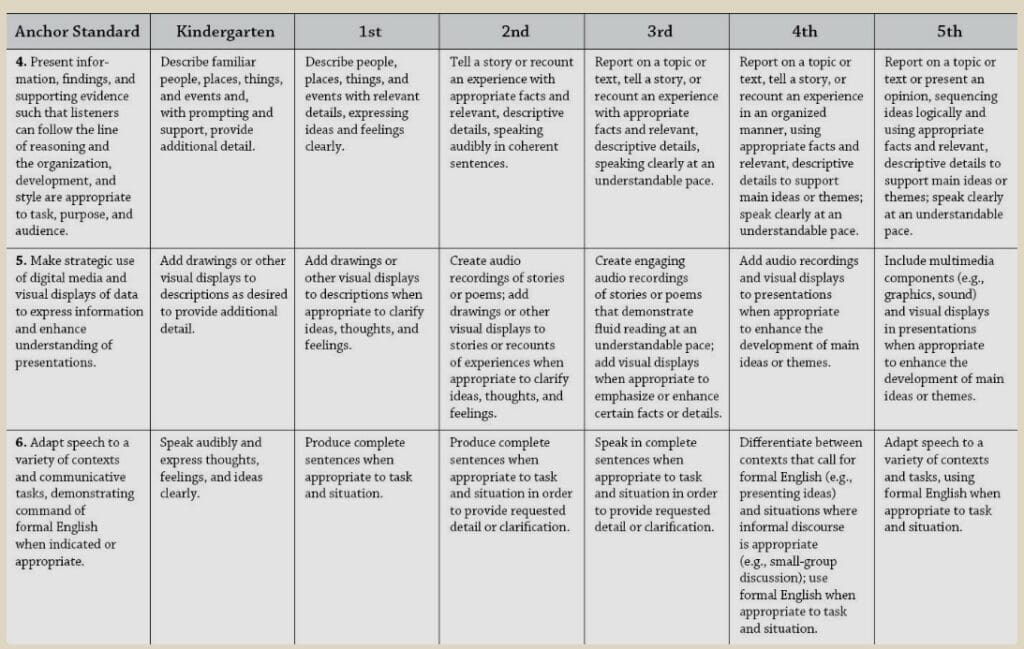
PBL Project Design Focus
When designing a PBL Project, your focus is to teach students academic content area knowledge and skills drawn from district or state standards. Your project also focuses on building students’ ability to think critically, solve problems, collaborate, and communicate (3Cs), which are the 21st Century skills students need to prepare for life and work in today’s world, according to PBL in the Elementary Grades book.
The book provides a project overview planning form. See below

On the form, it indicates which standards and skills you are targeting for your project.
Selecting Content Standards for Your Project
You are good to go if you have come up with your project ideas by starting from your standards. It is important to remember to align your project with standards.
Standards that are most important are called “priority standards” that are identify by your school or district you want to use as the focus for your project. Priority standards are often based on what items appear more frequently on state tests.
If priority standards have not been identified, you can decide for yourself or with colleagues in your grade level what the priority standards are for the content areas included in the project.
To Start the Alignment Process:
First decide on the few standards that are most essential for meeting the goals of the project. It is not a good idea to try to include as many standards as possible in the project since students will ne spending so much time on it. Typically, a project should focus only 1 – 3 standards from each academic content area to be included, depending on how specific standards are written.
If you try to include too many standards, you cannot teach them in any depth and assess them adequately.
PBL in Elementary Grades book provides an 4th grade Curriculum Map with Projects as an example:

Another suggestion the book made is to use curriculum guides or scope and sequence documents that contain standards that are “unpacked” into discrete skills and pieces of knowledge. You can use this specific guidance to design project products, assessments, and lesson that align closely with the standards.
Selecting 21st Century Skills
Communication, collaboration, and critical thinking/problem solving are the three most important 21st century skills called the “3Cs”. According to PBL in Elementary Grades book these skills and several others are a natural fit with PBL. The book recommends not to assume students are gaining these skills because you designed a challenging project. These skills should be taught and assessed in a project.
PBL in Elementary Grades book notes you only teach and assess two of the skills if this is your first project. One is oral communication (making presentation) because all projects include presenting to a public audience as an essential element. Presentation skills are called for in the Common Core Standards for English Language Arts, and they are straightforward to teach and assess.
Collaboration or working in teams is the other skill that is easy to teach and assess. You probably are familiar with group work and cooperative learning, so you already have some basics tools in your toolbox.
PBL in Elementary Grades book emphasizes the 3Cs are important for success in the 21st century, and that these skills can be taught and assessed in projects. See examples below:
Collaboration
- Take responsibility for the quality and timeliness of his or her own work; uses feedback; stays on task during group work.
- Accepts shared responsibility for the work of the group; helps improve the quality of the work an understanding of other members.
- Applies or encourages the use of strategies for facilitating discussion and decision making.
- Manages project by identifying and prioritizing goals and tasks, creating timelines, organizing resources, and monitoring progress.
- Respects the ideas, opinion, abilities, values, and feeling of other group members; Works well with diverse group members; Encourages group cohesion by using conflict management strategies.
Communication (When making a presentation)
- Organizes ideas and develops content appropriate to audiences and situations.
- Uses effective oral presentation skills.
- Create media/visual aids that enhance content delivery.
- Gauges audience reaction and/or understanding and adjusts presentation appropriately.
- Responds to questions appropriately.
Critical Thinking/Problem Solving
- Recognizes and defines problems accurately; raises relevant questions and issues, formulating them clearly and precisely.
- Gathers pertinent information from a variety of sources; evaluates the quality of information (source, validity, bias).
- Organizes, analyzes, and synthesizes information to develop well-reasoned conclusions and solutions, judging them against relevant criteria.
- Considers alternatives; recognizes and assesses assumptions, implications, and practical consequences.
College and Career Readiness Standards for English Language Arts: Speaking and Listening: Presentation of Knowledge and Ideas Continuum from Kindergarten to Fifth Grade. See Below:

Hallermann, Sara; Larmer, John; Mergendoller PhD, John. PBL in the Elementary Grades: Step-by-Step Guidance, Tools and Tips for Standards-Focused K-5 Projects (p. 32). Buck Institute for Education. Kindle Edition.
Teaching students how to think critically and solve problems is more challenging. These are complex skills that cut across several content areas, and most teachers only have experience with instruction that emphasizes factual and procedural knowledge. Assessing critical thinking/problem solving is also challenging, because it is not readily observable.
Hallermann and Mergendoller suggest other skills might be encouraged in your project, but not explicitly taught and assessed — such as creativity or global awareness. If you’re ambitious, and it’s not your first project, you may wish to add more skills to your list of goals, such as project management, the use of various technological tools, and cross-cultural competence. These are all teachable and assessable. Note that if you want to teach multiple 21st century skills, your project will need to be longer, to build enough time during the project to practice and assess the skills.
Hallermann, Sara; Larmer, John; Mergendoller PhD, John. PBL in the Elementary Grades: Step-by-Step Guidance, Tools and Tips for Standards-Focused K-5 Projects (p. 33). Buck Institute for Education. Kindle Edition.
If this is your first PBL project, you might want to review First PBL Project Modest in Scope Achieve Best Results
